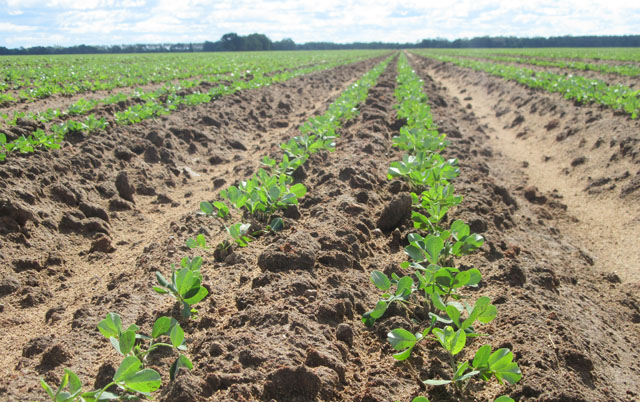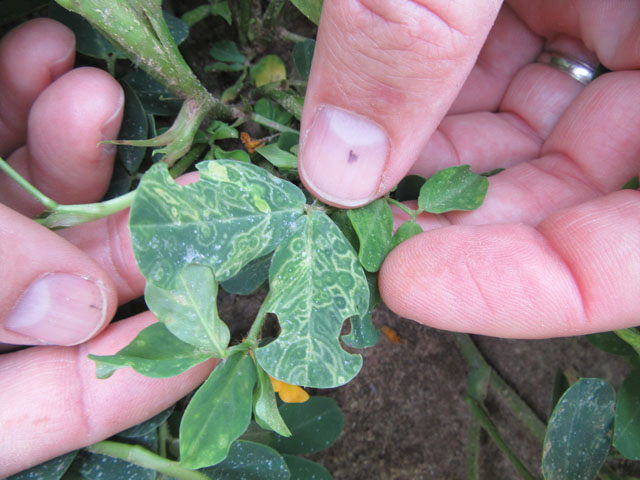Planting season is well under way, with some producers nearing completion of peanut, and cotton planting. Annually, thrips are problematic in early panted cotton and peanut. It will be important to keep an eye on thrips populations as seedlings emerge, and the weeks that follow to decide if an insecticide application is warranted. During the 2016 growing season, thrips arrived early and stayed longer than expected. In peanut, this resulted in a larger outbreak of Tomato Spotted Wilt Virus (TSWV) than had been seen in recent years.
Crops planted into fields with conventional tillage or single row spacing tend to have higher trhips injury than those strip-tilled into winter cover crops, or those planted with a twin row spacing. It is also important to achieve a uniform plant stand to help reduce risk of TSWV. Plantings prior to the May 10th usually have higher thrips pressure, and peanuts are at increased risk for TSWV. With May 10th behind us, any subsequent plantings between now and June 1st should be at a reduced risk for TSWV.
Besides the utilization of strip tillage, twin rows, and the manipulation of the planting window, there are other management tools that can be used to help mitigate thrips damage and TSWV. These include variety selection, seed treatments, in-furrow insecticides, and foliar sprays. It is important to note that once the furrow is closed, the majority of these options are lost.
Several peanut varieties that have good resistance to TSWV (5-10 points on Peanut RX):
- Florida-07
- Georgia-06G
- Georgia-07W
- Georgia-12Y
- Georgia-13M
- Georgia-14N
- Georgia Greener
- Tifguard
- TufRunner 297
CruiserMaxx seed treatment (Thiamethoxam) is one option available to peanut growers to reduce thrips injury. However, in years with high populations of thrips, the seed treatment alone may not provide adequate control.
In-furrow treatment options consists of either liquids or granules. One of the oldest treatments available is Phorate (Thimet 20G), a granule. It is the only insecticide option for thrips management proven to reduce the incidence of TSWV. In Georgia, growers have access to a granular product called AgLogic 15G (Aldicarb), that is not yet labeld for sale in Florida. As an insecticide, AgLogic will likely perform similar to Temik against thrips. Liquid options available include Admire Pro (Imidacloprid), Velum Total (Imidacloprid + Fluopyram) and various generics containing imidacloprid. Admire Pro is a product that can work effectively against thrips. Velum Total functions as both an insecticide and nematicide.
Foliar sprays are the last treatment method available to growers. Once the furrow has been closed, foliar insecticides are the only control option available. Orthene (Acephate) works to control thrips when sprayed as a foliar application in the field. Orthene should be applied only after scouting a field to determine that thrips are present in large enough populations to cause significant damage.
- 2025 Peanut Field Day Recap & Speaker Handouts - August 29, 2025
- Peanut Foliar Diseases Exploding Across Florida - August 22, 2025
- Provisional Nitrogen Fertilization Recommendation for Florida Cotton for the 2025 Season - June 20, 2025



